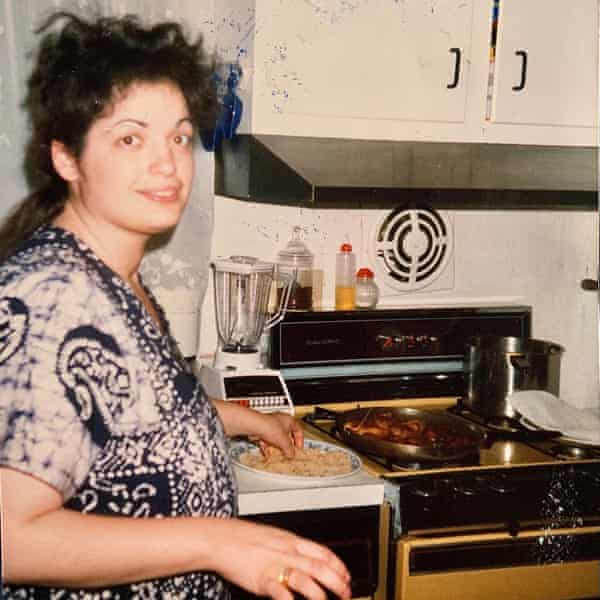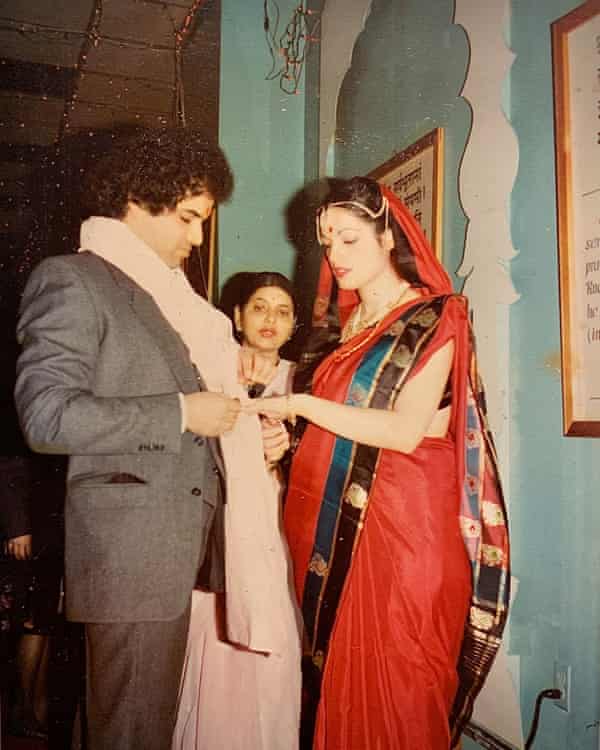When I was in sixth grade, my history teacher asked our class to bring in food that was reflective of our family’s personal heritage as part of an exercise to experience one another’s cultural backgrounds. The food could either be purchased or prepared with a parent.
In my predominantly white Long Island suburb, not far from New York City, most of my fellow students were planning offerings that featured common European fare (corned beef and cabbage, spaghetti, gyros) or classic American dishes (meatloaf, hotdogs, mashed potatoes.) A child of Indian, Puerto Rican and Italian descent, I wanted to offer a dish I had grown up with, but that I presumed none of my classmates had ever tried.
“How about pakoras?” my mom Loretta said to me that evening. Pakoras – chopped vegetables deep-fried in lightly spiced batter – were the perfect introductory snack into Indian cuisine. They weren’t spicy and their appearance wasn’t intimidating to someone who hadn’t tasted our country’s cuisine before.
The only thing was – my mother isn’t Indian.
A Puerto Rican and Italian American from the Bronx, she had met my father Roop, an immigrant from Mumbai, in the late 1970s. They fell in love and married in 1981. My brother and I were spoiled with meals from all three cultures: shrimp curry on Tuesdays, arroz con habichuelas y pollo (rice and beans with chicken) on Thursdays, or lasagna with meatballs on Sundays.
The journey it took for her to become a confident home cook of Indian cuisine was arduous – let alone having to enter an entirely new culture.

In 1979, when Loretta and Roop were dating, he’d take her to restaurants in Jackson Heights, in Queens, where many working-class immigrants lived upon arriving in the US. The aromas, colors, tastes and textures that flowed out of storefronts from merchants selling Indian goods intoxicated my mother, and piqued her interest in Indian culture.
My dad valued his Indian identity, as did his friends and family living in New York. Being accepted within their insular community meant a lot to my mother. “A lot of my family members could not understand why I was trying so hard,” she said. “Why I was dressing in Indian clothing and embracing the culture as I did. They questioned it. They rolled their eyes. But I think when you really care and love someone, you do those things.”
Soon, they decided to marry. But first, she had to meet her soon-to-be in-laws visiting from Mumbai, who worried about their son marrying an American.
“Can you make a meal for 50 people?” was the first question Roop’s father asked my mother upon meeting her. “Sure!” she responded with all the enthusiasm of a 22-year-old.. My mother had her work cut out for her. “I had never cooked before. I had to learn to cook Italian, Puerto Rican and Indian food – all at the same time.”
Months earlier, my mother’s first attempt at Indian cooking was a disaster. She had tried her hand at making chicken curry for my dad and his friends. The recipe called for coconut milk, but all she could find was Coco López, a Puerto Rican coconut cream typically used in piña coladas. It was an embarrassing moment for my insecure mother, as the unforgiving wives and girlfriends she had cooked for reveled in her failure. “So, how does it feel to be marrying a foreigner?” one of them said to Roop. “No, we are the foreigners,” he said, referring to himself and the entire dinner party of Indian immigrants, and defending my mother.
In the months leading up to their wedding, Loretta doubled down her efforts. “It took around 10 to 15 tries to perfect chicken curry,” she remembers. She took night classes at the Indian consulate and would ask Indian restaurant owners if she could observe the chefs in the kitchen, jotting down hand-written notes.
Indian cookbooks were not popular in the US at the time, butshe managed to find a used copy of Madhur Jaffrey’s An Invitation to Indian Cooking, which had step-by-step recipes she could follow. And when her mother-in-law Gopi visited from India, she taught her basic bread-making from scratch – from rolling the dough to cooking over a skillet. “Chapatis [flatbread]took a couple of years to get right. But eventually, I learned to make more: pooris, lolis and parathas [stuffed with spiced potatoes]. I think my lolis were a great success.”
My dad’s parents finally approved of his wish to wed my mother and eventually welcomed her into the family. Two ceremonies were held in Queens: one in a temple and one in a church, for the sake of each other’s parents.

Over the years, as Loretta grew more confident in the kitchen, she attempted a variety of dishes for friends and family: palak paneer (puréed spinach with cheese curd), aloo gobi (cauliflower and potatoes in a dry spice) and her pakoras, which were becoming increasingly popular. At dinner parties, her dishes became a hit within her new Indian social circle.
As we finished pan-frying the pakoras before I could take them to school, my mother said to me, “When you do something, do it because you truly are interested in it. Do not do it for somebody else. Do it for yourself because you want to and don’t let people dictate what you should learn.”
The following day, I walked into class with a new sense of pride as I placed the warm tin tray onto the table spread. Of all the dishes on display, it was the only one students completely devoured. “How long did it take to make these?” my teacher asked. “Took years,” I said smiling.
from Lifestyle | The Guardian https://ift.tt/3srQaJy
via IFTTT

comment 0 Comment
more_vert